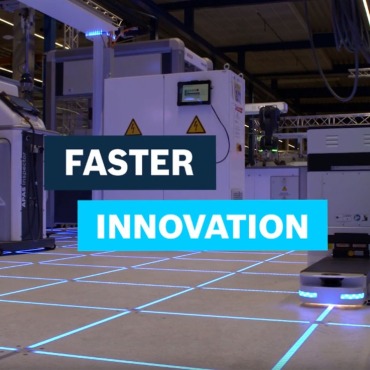

Select your location
Bosch Rexroth around the world
Asia & Pacific
Europe


Are you interested in the Factory of the Future but feel that the complexity of the technology can make it hard to get a clear perspective on what that future looks like and how it will fit into your business? That was the inspiration for our Model Factory: A place where we can develop and experience the Factory of the Future for real and, most importantly, share it with our customers.
At the moment, our Model Factory, which includes some of our latest manufacturing technologies, is set up in Stuttgart, where we’re developing and refining it. Later in the year, it will be moving to our new Customer and Innovation Center in Ulm (Germany), where visitors will be able to come and experience it for themselves.
We asked Peter Greiner, Vice President of Factory of the Future System Solutions at Bosch Rexroth, to tell us about the Model Factory and what the future has in store.

Can you tell us about the Model Factory and why you decided to set it up?

Of course. The Model Factory fulfils two main purposes: Firstly, it plays an important role in our cross-business-unit development process. It’s the place where new ideas are realized for the first time and can be tested under conditions that are close to reality. Secondly, but very importantly, it enables us to showcase our powerful, yet workable, Factory of the Future portfolio to our customers and give them a glimpse of manufacturing in the future.
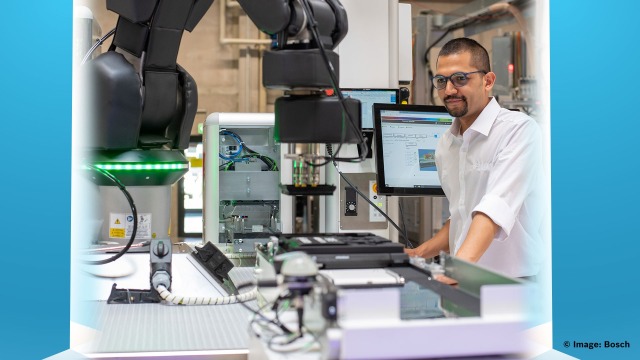

In a single sentence, can you explain the main benefit of the Model Factory to our customers?

In a nutshell, the Model Factory showcases all our latest developments, which helps us and our customers in the transformation to the Factory of the Future.

Does the Model Factory produce an actual product?

Production is simulated. It’s not real production, but it’s very close to reality. This enables customers to experience the production of different products first-hand and the change over from one product to another, which takes place in just a few seconds. This also includes all the necessary hardware and software changes.


What kinds of use cases does the Model Factory focus on?

To start with, the Model Factory will be focused on the machinery industry, manual and automated assembly processes, material handling and the software behind the Factory of the Future. In the next stage, we’ll break down these use cases by sectors, such as FMCG, battery and automotive, to name but a few.

How long did it take you to set up the Model Factory and roughly how many people were involved?

I suppose the process actually started back in 2017 when we were formulating our collective vision for the Factory of the Future. Hundreds of people were involved, from our sales and development teams, as well as customers from different regions around the world. We started setting up the Model Factory in Stuttgart in February and by April we were able to share the first test phase and some of our latest manufacturing technologies with people at the virtual Hannover Messe event.
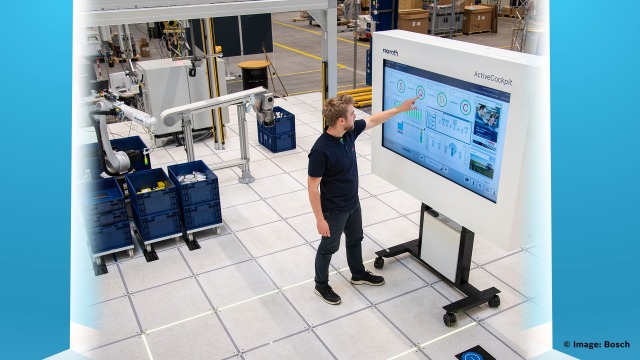

Did you encounter any big issues or challenges that you had to overcome?

The Model Factory is the glue that binds together the different technologies and skill sets within our company and our external partners. One of the main goals is to predict and overcome potential roadblocks by gaining more accurate, concrete insight into the various elements of the Factory of the Future.

What impact has the global pandemic had on the project?

The Model Factory has proven to be very effective during this challenging time. Especially during the digital Hannover Messe event, where we shared the Model Factory with local and international media – and it was very well received. In the future, nobody can predict how trade fairs will take place, but with the Model Factory we have a very interesting add-on to the traditional concept of the trade fair that enables us to showcase our intelligent manufacturing solutions.

What excites you most about the Model Factory?

There are two things really. Firstly, the Model Factory is real and touchable. It’s not just buzzwords or a collection of theories. Secondly, it’s a “neutral” and easily accessible platform that enables passionate pioneers to try out new ideas.
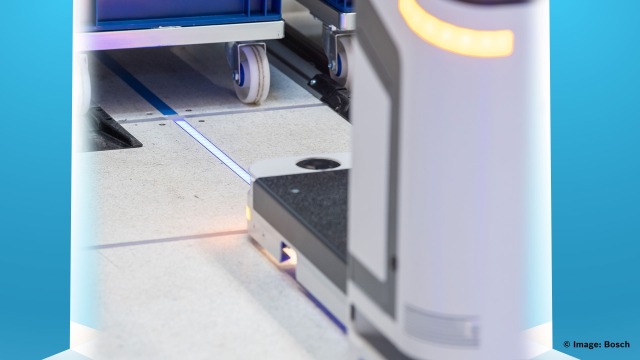

Did you learn anything new about the Factory of the Future from setting up the Model Factory?

I learned a lot, especially when it comes to software. Hardware needs to be modular and standardized in order to realize the vision of the Factory of the Future. The same is true for software. The full potential of software capabilities can be explored and developed in the unique environment of the Model Factory. This will be one of our clear focuses moving forward.

Has anyone outside of Bosch Rexroth seen it yet and, if so, have you received any feedback?

Before the virtual Hannover Fair, we invited input from a select group of partners and customers. I’m delighted to say that the concept convinced everybody. We got very positive feedback and a lot of requests from people who want to be partners in the Model Factory.

Do you think you’ll enhance the Model Factory in the future?

Certainly. The Model Factory is to play an active part in our manufacturing technologies product portfolio management and development process. We’re already planning to develop “beyond” solutions in a simulation and then create a prototype as proof of concept in the Model Factory. The different prototypes will then become part of the Factory of the Future story and will be included in the Model Factory for customer feedback and further development under ‘close to reality’ conditions.
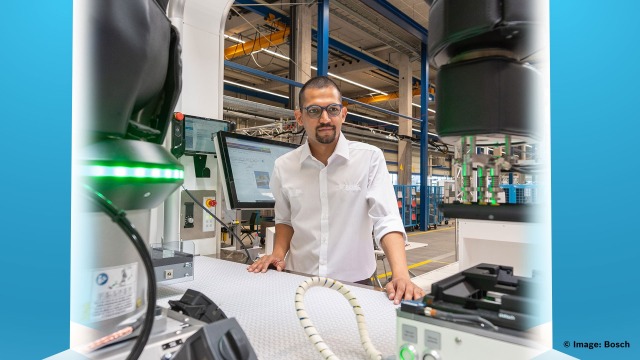

Does energy and resource efficiency play a part in the Model Factory?

Bosch is the first CO2-neutral company, so energy efficiency in manufacturing is vitally important to us. This green mindset also extends to new buildings. The latest technologies can be found, not just in the Model Factory, but also in the building itself. For example, we’ve incorporated our components in the building’s control system and the Model Factory will have its own energy platform. We’ve also included lots of new technologies that offer a much more efficient and sustainable operating mode than traditional solutions, such as our servo hydraulic axes, valve actuators and other energy efficient products.

How and where will people be able to experience the Model Factory?

The Model Factory will be housed in our new Customer and Innovation Center in Ulm, which will open its doors this September and will welcome partners and customers that want to come and experience it for themselves. People can also explore the Model Factory virtually, or by visiting one of our global customer centers. These centers will offer a scaled down version of the Model Factory with a digital connection to Ulm, allowing visitors to also see the wider impact of developments such as blockchain and the global production network.

Why would you recommend that people visit the Model Factory, once they’re able to?

That’s simple. The Model Factory is the place to be for anyone who wants to experience the Factory of the Future. They can see state-of-the-art technology in action. The latest trends and challenges are addressed in a practical way through applications aimed at improving the future of manufacturing. Everybody with an interest in the future is very welcome in Ulm, and I am confident they will leave inspired and equipped with workable solutions to move their own vision forwards.
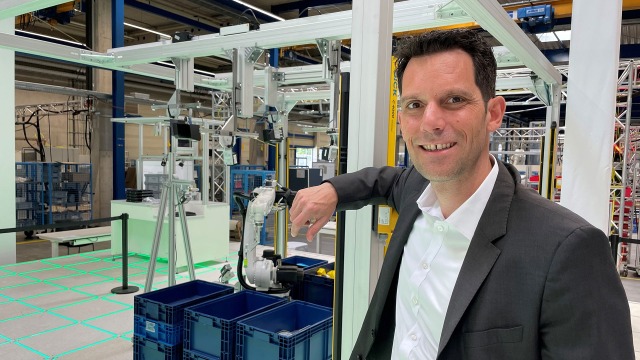
Peter Greiner
